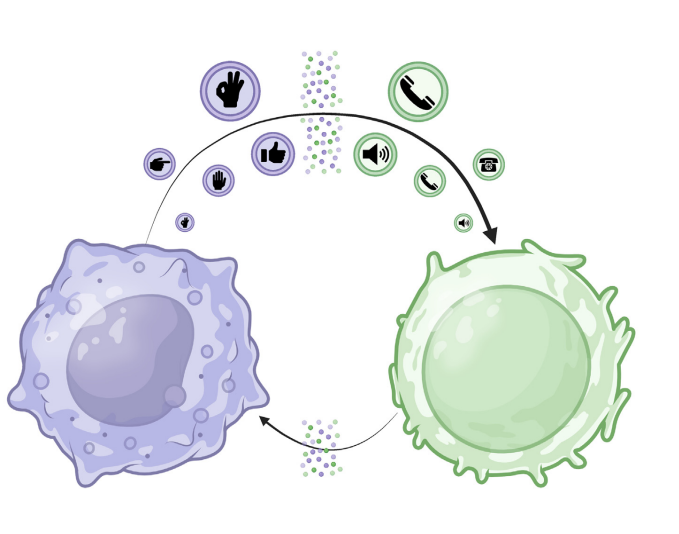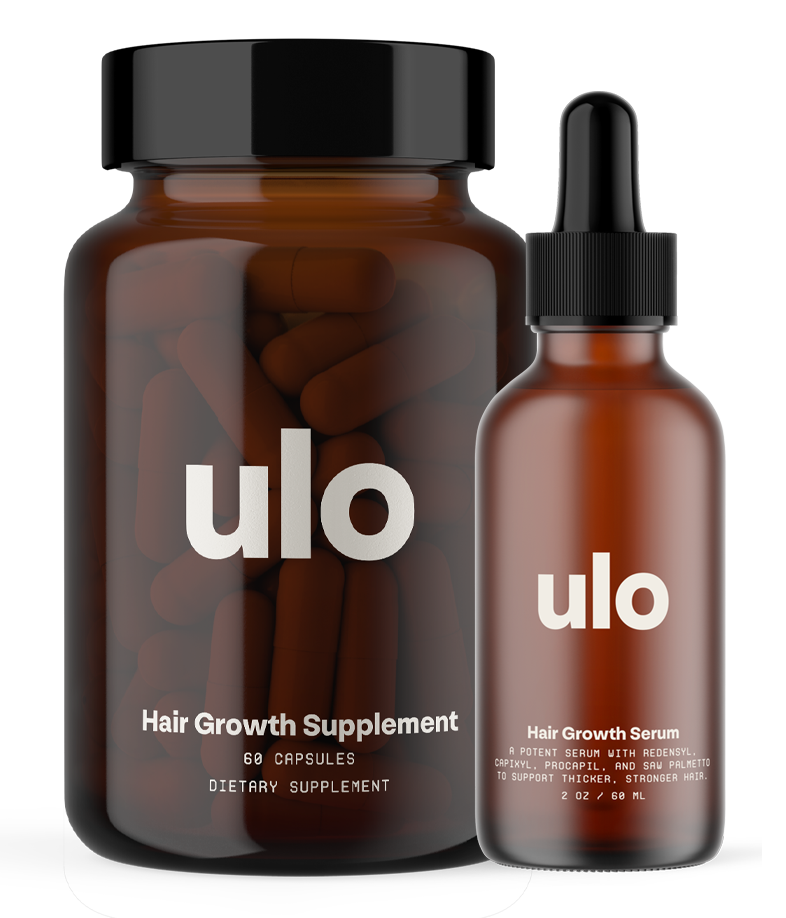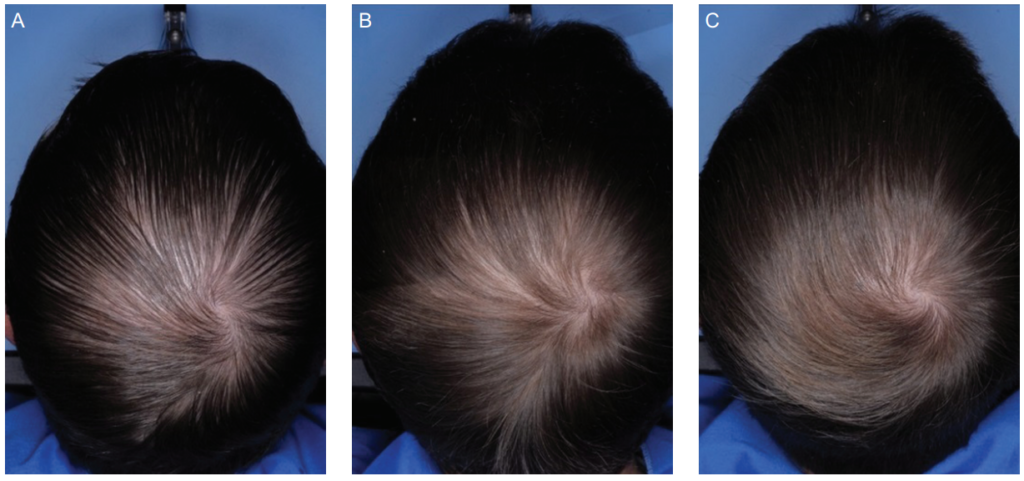- About
- Mission Statement
Education. Evidence. Regrowth.
- Education.
Prioritize knowledge. Make better choices.
- Evidence.
Sort good studies from the bad.
- Regrowth.
Get bigger hair gains.
Team MembersPhD's, resarchers, & consumer advocates.
- Rob English
Founder, researcher, & consumer advocate
- Research Team
Our team of PhD’s, researchers, & more
Editorial PolicyDiscover how we conduct our research.
ContactHave questions? Contact us.
Before-Afters- Transformation Photos
Our library of before-after photos.
- — Jenna, 31, U.S.A.
I have attached my before and afters of my progress since joining this group...
- — Tom, 30, U.K.
I’m convinced I’ve recovered to probably the hairline I had 3 years ago. Super stoked…
- — Rabih, 30’s, U.S.A.
My friends actually told me, “Your hairline improved. Your hair looks thicker...
- — RDB, 35, New York, U.S.A.
I also feel my hair has a different texture to it now…
- — Aayush, 20’s, Boston, MA
Firstly thank you for your work in this field. I am immensely grateful that...
- — Ben M., U.S.A
I just wanted to thank you for all your research, for introducing me to this method...
- — Raul, 50, Spain
To be honest I am having fun with all this and I still don’t know how much...
- — Lisa, 52, U.S.
I see a massive amount of regrowth that is all less than about 8 cm long...
Client Testimonials150+ member experiences.
Scroll Down
Popular Treatments- Treatments
Popular treatments. But do they work?
- Finasteride
- Oral
- Topical
- Dutasteride
- Oral
- Topical
- Mesotherapy
- Minoxidil
- Oral
- Topical
- Ketoconazole
- Shampoo
- Topical
- Low-Level Laser Therapy
- Therapy
- Microneedling
- Therapy
- Platelet-Rich Plasma Therapy (PRP)
- Therapy
- Scalp Massages
- Therapy
More
IngredientsTop-selling ingredients, quantified.
- Saw Palmetto
- Redensyl
- Melatonin
- Caffeine
- Biotin
- Rosemary Oil
- Lilac Stem Cells
- Hydrolyzed Wheat Protein
- Sodium Lauryl Sulfate
More
ProductsThe truth about hair loss "best sellers".
- Minoxidil Tablets
Xyon Health
- Finasteride
Strut Health
- Hair Growth Supplements
Happy Head
- REVITA Tablets for Hair Growth Support
DS Laboratories
- FoliGROWTH Ultimate Hair Neutraceutical
Advanced Trichology
- Enhance Hair Density Serum
Fully Vital
- Topical Finasteride and Minoxidil
Xyon Health
- HairOmega Foaming Hair Growth Serum
DrFormulas
- Bio-Cleansing Shampoo
Revivogen MD
more
Key MetricsStandardized rubrics to evaluate all treatments.
- Evidence Quality
Is this treatment well studied?
- Regrowth Potential
How much regrowth can you expect?
- Long-Term Viability
Is this treatment safe & sustainable?
Free Research- Free Resources
Apps, tools, guides, freebies, & more.
- Free CalculatorTopical Finasteride Calculator
- Free Interactive GuideInteractive Guide: What Causes Hair Loss?
- Free ResourceFree Guide: Standardized Scalp Massages
- Free Course7-Day Hair Loss Email Course
- Free DatabaseIngredients Database
- Free Interactive GuideInteractive Guide: Hair Loss Disorders
- Free DatabaseTreatment Guides
- Free Lab TestsProduct Lab Tests: Purity & Potency
- Free Video & Write-upEvidence Quality Masterclass
- Free Interactive GuideDermatology Appointment Guide
More
Articles100+ free articles.
-
Oral vs. Topical Dutasteride: What Studies Show
-
Minoxidil Shedding – What to Expect & When it Stops
-
Peppermint Oil for Hair Growth: Better Than Minoxidil?
-
Caffeine For Hair Loss (AGA): Evidence & Recommendations
-
Microneedling For Hair Loss: 5 Strategies to Reduce Pain
-
Saw Palmetto: Is It As Effective As Finasteride?
-
Platelet-Rich Plasma (PRP): Does It Regrow Hair? Maybe, Maybe Not.
-
The Misleading Results Of The Pumpkin Seed Oil-Hair Loss Study
PublicationsOur team’s peer-reviewed studies.
- Microneedling and Its Use in Hair Loss Disorders: A Systematic Review
- Use of Botulinum Toxin for Androgenic Alopecia: A Systematic Review
- Conflicting Reports Regarding the Histopathological Features of Androgenic Alopecia
- Self-Assessments of Standardized Scalp Massages for Androgenic Alopecia: Survey Results
- A Hypothetical Pathogenesis Model For Androgenic Alopecia:Clarifying The Dihydrotestosterone Paradox And Rate-Limiting Recovery Factors
Menu- AboutAbout
- Mission Statement
Education. Evidence. Regrowth.
- Team Members
PhD's, resarchers, & consumer advocates.
- Editorial Policy
Discover how we conduct our research.
- Contact
Have questions? Contact us.
- Before-Afters
Before-Afters- Transformation Photos
Our library of before-after photos.
- Client Testimonials
Read the experiences of members
Before-Afters/ Client Testimonials- Popular Treatments
-
ArticlesHair Loss Breakthroughs or Media Hype? Stem Cell Secretome Treatments
First Published Mar 4 2025Last Updated Sep 19 2025Natural Remedies Researched & Written By:Sarah King, PhD
Researched & Written By:Sarah King, PhD Reviewed By:Rob English, Medical Editor
Reviewed By:Rob English, Medical Editor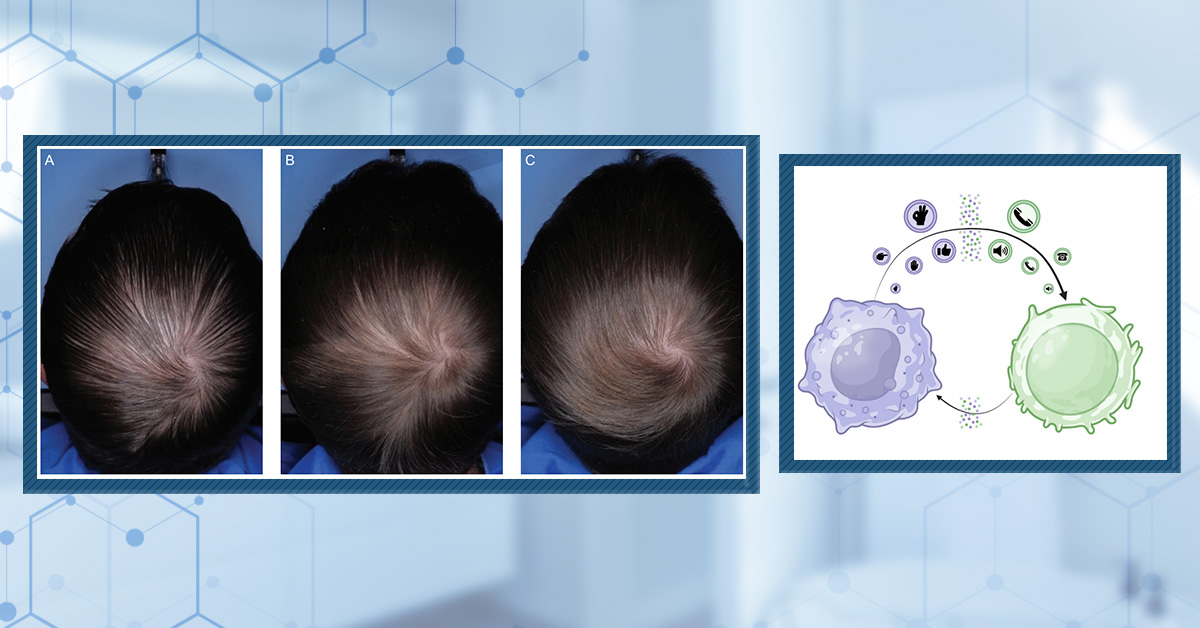
Want help with your hair regrowth journey?
Get personalized support, product recommendations, video calls, and more from our researchers, trichologists, and PhD's dedicated to getting you the best possible outcomes.
Learn MoreArticle Summary
Stem cell secretome treatments are making headlines as the next big breakthrough in hair regrowth—but do they really work? While the science behind exosomes and growth factors sounds promising, media hype often overshadows the need for rigorous clinical trials. Curious about the real evidence behind these treatments? We break down some of the research presented in mainstream media article and explore why some are chosen over others.
Full Article
We all get excited when we read about new research in the hair loss space – especially as so few make it through the preclinical stage. Because of this, when the media publicizes so-called “breakthroughs” in hair loss treatments, it catches everyone’s attention. This can lead to unjustified hype for data that may have been conducted in vitro/in animals, or it may have poor evidence quality.
In this article, we are going to take a look at a recent media article that focuses on treatments using the stem cell “secretome,” the molecules that are secreted from stem cells as they grow. We will also explore how some studies get publicized by large media outlets while others may get left behind.
What Is The Secretome?
The secretome was first used around the year 2000 when researchers described the secretory processes in the bacteria Bacillus subtilis.[1]Tjalsma H., Bolhuis A., Jongbloed J.D., Bron S., van Dijl J.M. (2000). Signal peptide-dependent protein transport in Bacillus subtilis: a genome-based survey of the secretome. Microbiology and … Continue reading Since then, it has become widely used to refer to the collection of proteins and other molecules that a cell secretes into the extracellular space.
These secreted molecules play a crucial role in cell-cell communication and various biological processes. They can signal when conditions are favorable for cell division (proliferation) or, conversely, when there is cellular distress-such as viral infection or DNA damage-triggering an immune response by recruiting antibodies to neutralize the threat.[2]Park, S-R., Kim, J-W., Jun, H-S., Roh, J.Y., Lee, H-Y., Hong, I-S. (2017). Stem Cell Secretome and Its Effect on Cellular Mechanisms Relevant to Wound Healing. Molecular Therapy. 26(2). 606-617. … Continue reading,[3]Schafer, M.J., Zhang, X., Kumar, A., Atkinson, E., Zhu, Y., Jachim, S., Mazula, D.L., Brown, A.K., Berning, M., Aversa, Z., Kotajarvi, B., Bruce, C.J., Greason, K.L., Suri, R.M., Tracy, R.P., … Continue reading This intricate signaling network is essential for maintaining homeostasis, the body’s internal balance.
Figure 1: Cell-cell interactions are sophisticated ways for cells to give each other important information, such as when to grow or when to begin the process of cell death.[4]Wu, W., Krijgsveld. (2024). Secretome Analysis: Reading Cellular Sign Language to Understand Intercellular Communication. Molecular & Cellular Proteomics. 23(1). 1-18. Available at: … Continue reading
All-Natural Hair Supplement + Topical
The top natural ingredients for hair growth, all in one serum & supplement.
Take the next step in your hair growth journey with a world-class natural serum & supplement. Ingredients, doses, & concentrations built by science.
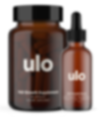
How Can the Secretome Influence Hair Growth?
The secretome, particularly from stem cells, has shown some effect on hair regrowth, and as such, products (like Neogenesis – read our article here) have emerged that claim to utilize the molecules found in the secretome to improve hair growth.
A key component of the secretome that companies often target is exosomes. Exosomes are small bubble-like structures (typically 50-200 nm in size) that play an important role in intercellular communication. They contain a diverse cargo of biomolecules, including proteins (e.g., cytokines, growth factors), nucleic acids (e.g., miRNAs), lipids, and metabolites. This complex mixture allows exosomes to transmit a wide range of biological signals.
Exosomes are thought to support hair regrowth by creating a favorable environment for follicular regeneration. This is thought to involve a number of key mechanisms:
- Stimulating hair follicle stem cells (HFSCs) – Growth factors and cytokines in the secretome can activate HFSCs, encouraging them to enter the anagen phase and initiate new hair growth.[5]Rajendran, R.L., Gangadaran, P., Bak, S.S., Oh, M.J., Kalimithu, S., Lee, H.W., Baek, S.H., Zhu, L., Sung, Y.K., Jeong, S.J., Lee, S.W., Lee, J., Ahn, B-C. (2017). Scientific Reports. 7(15560). … Continue reading
- Enhancing blood supply – Angiogenic factors within the secretome promote the formation of new blood vessels, improving oxygen and nutrient delivery to the hair follicle.[6]Komaki, M., Numata, Y., Morioka, C., Honda, I., Tooi, M., Yokoyama, N., Ayame, H., Iwasaki, K., Taki, A., Oshima, N., Morita, I. (2017). Exosomes of human placenta-derived mesenchymal stem cells … Continue reading
- Extracellular matrix (ECM) modulation – Secretome-derived proteins help maintain a supportive ECM, which is essential for follicular stability and function.[7]Wang, L., Hu, L., Zhou, X., Xiong, Z., Zhang, C., Shehada, H.M.A., Hu, B., Song, J., Chen, L. (2017). Exosomes secreted by human adipose mesenchymal stem cells promote scarless cutaneous repair by … Continue reading
So, with all of these potential benefits, it’s no surprise that media outlets promote it. This BBC Science article goes into some detail about the use of the stem cell secretome and highlights two studies: one that provides stem cells to balding areas and the other using stem cell conditioned media.
Let’s take a look at these.
Study One – Fat grafts enriched with ADRCs
Quote from the article: “The treatment increased hair growth over 24 weeks (albeit with a possible need for repeat treatment after a year and is now being developed by US company Bimini Health Tech under the name Kerastem.”
A prospective, randomized, multi-center device trial evaluating the safety and efficacy of fat grafts enriched with adipose-derived regenerative cells (ADRCs) for treating early AGA.[8]Kuka, G., Epstein, J., Aronowitz, J., Glasgold, M.J., Rogal, J.G., Brown, W., Geronemus, R.G., Daniels, E.J., Washenik, K. (2020). Cell Enriched Autologous Fat Grafts to Follicular Niche Improves … Continue reading 71 men and women with early AGA were included.
Treatment Groups:
- 16 patients: Puregraft fat and 1.0 x106 ADRCs/cm2 of scalp
- 22 patients: Puregraft fat and 0.5 x 106 ADRCs/cm2 of scalp
- 24 patients: Puregraft fat alone
- 9 patients: Saline control
The treatments were delivered into the skin and subcutaneous layer of the scalp, with 40 cm2 of scalp treated per patient.
Outcomes:
- The procedures were well tolerated, and no unanticipated adverse events were reported.
- When evaluating all patients together, no statistically significant differences were found between treatment groups in terminal hair counts or widths.
- In a subgroup of patients with Norwood Hamilton 3 hair loss, the low-dose ADRC treatment showed statistically significant increases in terminal hair count compared to the control.
Figure 2: A Norwood Hamilton 3 patient treated with low dose ADRCs and Puregraft fat.[9]Kuka, G., Epstein, J., Aronowitz, J., Glasgold, M.J., Rogal, J.G., Brown, W., Geronemus, R.G., Daniels, E.J., Washenik, K. (2020). Cell Enriched Autologous Fat Grafts to Follicular Niche Improves … Continue reading
Our Conclusion: The treatment showed no significant hair regrowth potential across the whole population of patients but may be beneficial for a certain subgroup.
Study Two – Stem Cell Conditioned Media
Quote from the article: “Those who received the rejuvenating elixir grew an extra 14 hairs per cm2 compared to two per cm2 with the placebo.”
A randomized controlled trial was conducted in which the efficacy and safety of human adipocyte-derived mesenchymal stem-cells conditioned media (ADSC-CM) was evaluated for treating AGA after nonablative fractional laser treatment.[10]Lee, Y., Kim, J., Kim, J., Park, S., Lee, J.H. (2020). The Effect of Conditioned Media from Human Adipocyte-Derived Mesenchymal Stem Cells on Androgenetic Alopecia After Nonablative Fractional Laser … Continue reading 30 men and women with AGA were included.
Treatment:
- 15 patients: ADSC-CM treatment group
- 15 patients: Placebo group
All patients received a single session of 1,550-nm fractional nonablative erbium glass-laser treatment. The ADSC-CM group also received topical application of SCM2-Black3 (ADSC-CM) once weekly for 12 weeks. The placebo group received a topical application of normal saline once weekly for 12 weeks. Weekly seld-applications of microneedle stamps were also performed on the entire scalp area.
Outcomes:
- As measured by phototrichogram, total hair density increased by 13.6 hairs/cm2 in the treated group compared to 2 cm2 in the placebo group.
- Global Improvement Scores (as assessed by blinded investigators) showed a significant increase in scores for the treated group compared to the placebo group.
- However, when evaluating clinical changes in hair regrowth, the blinded investigators found no significant differences between the two groups.
Our Conclusion: While significant differences were found between the two treatments on a microscopic scale, these did not translate to noticeable macroscopic improvements in hair regrowth.
The article also mentions the 2dDR study (you can read about that in our article here)
So, the results, while promising for early clinical studies, were not particularly groundbreaking. The question is, why do media outlets choose certain studies over others? Well, it turns out that it’s more likely to be who you know rather than the robustness of your data.
How Do I Get My Research Into the Media?
PR firms, industry connections, and influencers all play important roles in shaping which scientific research gains widespread media coverage, especially in this “always online” society that exists today.
How Do PR Firms and Industry Connections Help?
PR firms and industry connections significantly impact which research receives media attention.[11]Shipman, M. (2014). Public relations as science communication. JCOM. 13(03). C05. Available at: https://doi.org/10.22323/2.13030305 They do this through multiple avenues.
- Press Releases: Well-written press releases are important for attracting mainstream media coverage. Studies show that press releases are the most powerful predictor of media efforts, with researchers more likely to engage in external science communication when urged by their institutions.
- Strategic Targeting: PR professionals focus on influential outlets like the BBC and The New York Times, where coverage lends credibility and reaches a far wider audience.
- Relationship Building: PR agents act as intermediaries between scientists and journalists, helping to translate complex concepts into accessible language and preparing researchers for media interactions.
In the media article we have been discussing, you see multiple individuals pop up with an interest in getting their brand and research into the mainstream media. One is from Pelage Pharma, which is currently running a Phase 2 trial for their “stem-cell activating” hair loss treatment, and the other is a researcher from COMSATs in Pakistan who worked on the 2dDR paper, which gained significant popularity in 2024.
Of course, when PR firms help put the research out there, they put the best foot forward in terms of results. Which can lead to overhyping results that may not actually lead to clinical improvements (see above).
How Can Social Media Improve Research Accessibility?
Social media influencers and celebrities have also become increasingly important in science communication. They often possess substantial viewer bases, allowing them to rapidly disseminate information to large audiences and make complex topics more accessible to the public.[12]Looi, J., Ho, S.S. (2023). Spokespersons for science: examining social media influencer’ popularization of controversial technologies on YouTube. JCOM. 22(01). A06. Available at: … Continue reading
However, this involvement can also present challenges. For example, there’s a risk of oversimplification or misrepresentation of complex findings when translated for social media audiences.[13]Groshek, J., Bronda, S. (2016). A Cycle of Misinformation. Boston University. Available at: https://www.bu.edu/articles/2016/social-media-distort-misinform-when-communicating-science/ (Accessed: … Continue reading Influencers may also inadvertently promote weak or non-peer-reviewed studies, potentially undermining scientific credibility if later disproven. They may also focus on trendy or controversial topics, which can hype up less meaningful data rather than focusing on robust, strong evidence.
What Are Some Examples of Overhyped Hair Loss ‘Breakthroughs’?
While there have been many over the years, these four examples stay in our mind as some overhyped potential hair loss treatments.
- Prostaglandin D2 (PGD2) Inhibitors
Initial studies identified elevated levels of PGD2 in the scalps of balding men, suggesting that inhibiting this molecule could promote hair growth. However, subsequent studies failed to demonstrate significant efficacy in humans, leading to diminished enthusiasm.[14]English Jnr, R., Ruiz, S. (2021). Conflicting Reports Regarding the Histopathological Features of Androgenic Alopecia: Are Biopsy Location, Hair Diameter Diversity, and Relative Hair Follicle … Continue reading
- Follica
This was presented by the media as a way to “trick” skin cells into developing new hair follicles.[15]Cossins, D. (2013). Will we ever…banish baldness? BBC Future. Available at: https://www.bbc.co.uk/future/article/20131127-will-we-ever-banish-baldness (Accessed: March 2025) The company Follica came up with a treatment based on research by George Cotsarelis at the University of Pennsylvania using wound healing processes to reprogram skin cells into an embryonic state. The company has since gone quiet, and the website is just a home screen with no information.
- Krox20
Krox20, a transcription factor, was hailed as a potential key to reversing hair loss in 2017 as it was found that it was expressed in certain skin cells that later develop into hair shafts. Their study, conducted in mice, suggested that Krox20 plays a role in hair follicle regulation and growth. Fast forward to 2025, and we are still looking at in vitro/in vivo studies determining the mechanism of action rather than seeing any marketable treatments for hair regrowth.[16]Ghotbi, E., Tchegnon, E., Chen, Z., Li, S., Shipman, T., Wang, Y., Raman, J., Zhang, Y., McKay, R.M., Liao, C-P., Le, L.Q. (2024). Transcription factor Krox20 marks epithelial stem cell ancestors for … Continue reading You can read our 2017 article about Krox20 here.
- Copper Peptides
Copper peptides are small protein fragments that bind to copper ions, playing a role in various biological processes, including wound healing, tissue repair, and antioxidant activity.[17]Pickart, L., Margolina, A. (2018). Regenerative and Protective Actions of the GHK-Cu Peptide in the Light of the New Gene Data. International Journal of Molecular Sciences. 19(7). 1987. Available at: … Continue reading The most well-known copper peptide in hair growth research is GHK-Cu. Early studies suggested that copper peptides could improve hair growth (in vitro) by stimulating the growth and maturation of follicular cells.[18]Pyo, K.H., Yoo, H.G., Won, C.H., Lee, S.H., Kang, Y.J., Eun, H.C., Cho, K.H., Kim, K.H. (2007). The effect of the tripeptide-copper complex on human hair growth in vitro. Archives of Pharmaceutical … Continue reading
However, while in vitro and animal studies showed some promise, there is a lack of clinical evidence in humans showing that copper peptides significantly regrow hair.
Final Thoughts
Potential hair loss treatments often get prematurely hyped up in mainstream media before robust clinical evidence can determine whether they actually work. While it’s exciting to hear about scientific advancements, it’s important to approach claims in the media with a critical eye.
When evaluating hair loss treatments, consumers should look for peer-reviewed clinical trials, statistically significant results with clinical efficacy, and long-term safety data rather than relying on in vitro or animal studies alone. Media coverage often amplifies preliminary findings, but without rigorous human trials, the real efficacy of a treatment will remain unknown.
Ultimately, while stem cell secretome research and other emerging technologies show promise, science takes time. The best approach is to read the research rather than just the news article to make sure you get the full picture.
References[+]
References ↑1 Tjalsma H., Bolhuis A., Jongbloed J.D., Bron S., van Dijl J.M. (2000). Signal peptide-dependent protein transport in Bacillus subtilis: a genome-based survey of the secretome. Microbiology and Molecular Biology Reviews. 64. 515–547. Available at: https://doi.org/10.1128/mmbr.64.3.515-547.2000 ↑2 Park, S-R., Kim, J-W., Jun, H-S., Roh, J.Y., Lee, H-Y., Hong, I-S. (2017). Stem Cell Secretome and Its Effect on Cellular Mechanisms Relevant to Wound Healing. Molecular Therapy. 26(2). 606-617. Available at: https://doi.org/10.1016/j.ymthe.2017.09.023 ↑3 Schafer, M.J., Zhang, X., Kumar, A., Atkinson, E., Zhu, Y., Jachim, S., Mazula, D.L., Brown, A.K., Berning, M., Aversa, Z., Kotajarvi, B., Bruce, C.J., Greason, K.L., Suri, R.M., Tracy, R.P., Cumming, S.R., White, T.A., LeBrasseur, N.K. (2020). The senescence-associated secretome as an indicator of age and medical risk. JCI Insight. 5(12). E133668. Available at: https://doi.org/10.1172/jci.insight.133668 ↑4 Wu, W., Krijgsveld. (2024). Secretome Analysis: Reading Cellular Sign Language to Understand Intercellular Communication. Molecular & Cellular Proteomics. 23(1). 1-18. Available at: https://doi.org/10.1016/j.mcpro.2023.100692 ↑5 Rajendran, R.L., Gangadaran, P., Bak, S.S., Oh, M.J., Kalimithu, S., Lee, H.W., Baek, S.H., Zhu, L., Sung, Y.K., Jeong, S.J., Lee, S.W., Lee, J., Ahn, B-C. (2017). Scientific Reports. 7(15560). Available at: https://doi.org/10.1038/s41598-017-15505-3 ↑6 Komaki, M., Numata, Y., Morioka, C., Honda, I., Tooi, M., Yokoyama, N., Ayame, H., Iwasaki, K., Taki, A., Oshima, N., Morita, I. (2017). Exosomes of human placenta-derived mesenchymal stem cells stimulate angiogenesis. Stem Cell Research & Therapy. 3(8). 219. Available at: https://doi.org/10.1186/s13287-017-0660-9 ↑7 Wang, L., Hu, L., Zhou, X., Xiong, Z., Zhang, C., Shehada, H.M.A., Hu, B., Song, J., Chen, L. (2017). Exosomes secreted by human adipose mesenchymal stem cells promote scarless cutaneous repair by regulating extracellular matrix remodelling. Scientific Reports.17(7). 13321. Available at: https://doi.org/10.1038/s41598-017-12919-x ↑8 Kuka, G., Epstein, J., Aronowitz, J., Glasgold, M.J., Rogal, J.G., Brown, W., Geronemus, R.G., Daniels, E.J., Washenik, K. (2020). Cell Enriched Autologous Fat Grafts to Follicular Niche Improves Hair Regrowth in Early Androgenetic Alopecia. Aesthetic Surgery Journal. 40(6). NP328-NP339. Available at: https://doi./org/10.1093/asj/sjaa037 ↑9 Kuka, G., Epstein, J., Aronowitz, J., Glasgold, M.J., Rogal, J.G., Brown, W., Geronemus, R.G., Daniels, E.J., Washenik, K. (2020). Cell Enriched Autologous Fat Grafts to Follicular Niche Improves Hair Regrowth in Early Androgenetic Alopecia. Aesthetic Surgery Journal. 40(6). NP328-NP339. Available at: https://doi./org/10.1093/asj/sjaa037 ↑10 Lee, Y., Kim, J., Kim, J., Park, S., Lee, J.H. (2020). The Effect of Conditioned Media from Human Adipocyte-Derived Mesenchymal Stem Cells on Androgenetic Alopecia After Nonablative Fractional Laser Treatment. Dermatologic Surgery. 46(12). 1698-1704. Available at: https://doi.org/10.1097/DSS.0000000000002518 ↑11 Shipman, M. (2014). Public relations as science communication. JCOM. 13(03). C05. Available at: https://doi.org/10.22323/2.13030305 ↑12 Looi, J., Ho, S.S. (2023). Spokespersons for science: examining social media influencer’ popularization of controversial technologies on YouTube. JCOM. 22(01). A06. Available at: https://doi.org/10.22323/2.22010206 ↑13 Groshek, J., Bronda, S. (2016). A Cycle of Misinformation. Boston University. Available at: https://www.bu.edu/articles/2016/social-media-distort-misinform-when-communicating-science/ (Accessed: March 2025) ↑14 English Jnr, R., Ruiz, S. (2021). Conflicting Reports Regarding the Histopathological Features of Androgenic Alopecia: Are Biopsy Location, Hair Diameter Diversity, and Relative Hair Follicle Miniaturization Partly to Blame? Clinical, Cosmetic and Investigational Dermatology. 7(14). 357-365. Available at: https://doi.org/10.2147/CCID.S306157 ↑15 Cossins, D. (2013). Will we ever…banish baldness? BBC Future. Available at: https://www.bbc.co.uk/future/article/20131127-will-we-ever-banish-baldness (Accessed: March 2025) ↑16 Ghotbi, E., Tchegnon, E., Chen, Z., Li, S., Shipman, T., Wang, Y., Raman, J., Zhang, Y., McKay, R.M., Liao, C-P., Le, L.Q. (2024). Transcription factor Krox20 marks epithelial stem cell ancestors for hair follicle formation. The Journal of Clinical Investigation. 134(23). E180160. Available at: https://doi.org/10.1172/JCI180160 ↑17 Pickart, L., Margolina, A. (2018). Regenerative and Protective Actions of the GHK-Cu Peptide in the Light of the New Gene Data. International Journal of Molecular Sciences. 19(7). 1987. Available at: https://doi.org/10.3390/ijms19071987 ↑18 Pyo, K.H., Yoo, H.G., Won, C.H., Lee, S.H., Kang, Y.J., Eun, H.C., Cho, K.H., Kim, K.H. (2007). The effect of the tripeptide-copper complex on human hair growth in vitro. Archives of Pharmaceutical Research. 30(7). 834-839. Available at: https://doi.org/10.1007/BF02978833 Want help with your hair regrowth journey?
Get personalized support, product recommendations, video calls, and more from our researchers, trichologists, and PhD's dedicated to getting you the best possible outcomes.
Learn More
Sarah King, PhD
Dr. Sarah King is a researcher & writer who holds a BSc in Medical Biology, an MSc in Forensic Biology, and a Ph.D. in Molecular and Cellular Biology. While at university, Dr. King’s research focused on cellular aging and senescence through NAD-dependent signaling – along with research into prostaglandins and their role in hair loss. She is a co-author on several upcoming manuscripts with the Perfect Hair Health team.
"... Can’t thank @Rob (PHH) and @sanderson17 enough for allowing me to understand a bit what was going on with me and why all these [things were] happening ... "
— RDB, 35, New York, U.S.A."... There is a lot improvement that I am seeing and my scalp feel alive nowadays... Thanks everyone. "
— Aayush, 20’s, Boston, MA"... I can say that my hair volume/thickness is about 30% more than it was when I first started."
— Douglas, 50’s, Montréal, CanadaWant help with your hair regrowth journey?
Get personalized support, product recommendations, video calls, and more from our researchers, trichologists, and PhD's dedicated to getting you the best possible outcomes.
Join Now - Mission Statement
 Scroll Down
Scroll Down